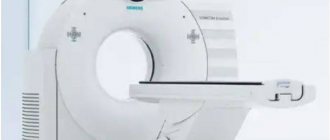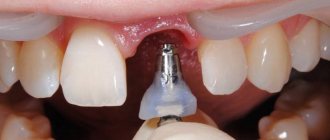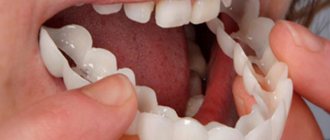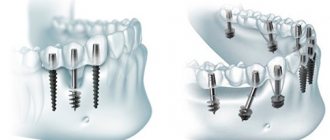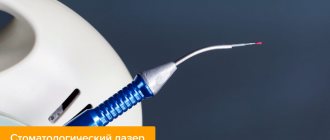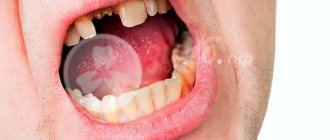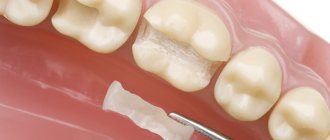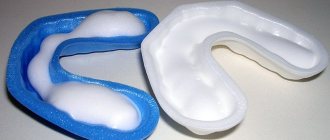An x-ray is the dentist’s main tool in making the correct diagnosis. However, a conventional orthopantomogram or targeted photograph has limited diagnostic potential and does not provide complete data on the condition of the teeth and maxillofacial area. But technologies are constantly being modernized and today, more informative technology has come to the aid of conventional radiography - dental computed tomography (CT).
3D CT – what is this procedure and what is it for?
3D imaging of the jaw is one of the main dental procedures used in diagnosis. The data obtained allows us to assess the condition of a specific maxillofacial area and plan further treatment.
This diagnostic tool is universal; it is used by both therapists and orthopedists, periodontists and implantologists. Using a 3D image, the therapist assesses the condition of the roots and canals of the tooth, and clarifies the localization of the inflammatory process.
An orthopedist can examine the anatomical structure of the temporomandibular joints, an implantologist can examine the volume and density of bone tissue in the area of the upcoming operation, as well as the parameters of the maxillary sinuses (maxillary sinuses).
Sometimes a large part of the tooth remains, as they say, “behind the scenes”, and the dentist simply cannot see it. Then computed tomography comes to the rescue, which allows you to examine the hidden area and prevent unpleasant consequences for the patient.
Until recently, the “gold standard” for instrumental diagnostics was a panoramic image. Today there is a more advanced method in which the maxillofacial area is scanned using computer technology.
Unique visualization method
A computed tomograph produces a high-quality three-dimensional image of an individual tooth, maxillary sinuses, one or both jaws. Unlike standard panoramic images, a 3D tomogram allows the doctor to see the desired anatomical structures in a virtual section, from any angle.
During the procedure, the doctor can enlarge, rotate and study the maxillofacial area of interest at the required angle, which is unrealistic with conventional radiography.
Computed tomography is an integral and primary stage of examination before implantation. It allows you not only to assess the condition of bone tissue, but also to measure its height, width and density. Moreover, three-dimensional beams help to choose the optimal method for installing implants through preliminary virtual surgery.
3D CT is a multi-purpose and indispensable diagnostic tool that makes it possible to avoid many medical errors and complications. Thanks to this examination, the quality of treatment increases significantly and eliminates unnecessary traumatic operations.
How much does it cost to take a dental photograph in Moscow?
The cost of a 3D dental photo in Moscow depends on a number of factors: the clinic, the type of equipment and the size of the area being examined. The price of the service usually already includes recording images onto a CD. Printing of photographs is paid separately.
We compared the cost of dental CT scans in two well-known Moscow dental chains: “All Yours”, “Novadent” and in the clinic of the Open Association of Dentists ROOTT.
Dental network “All Yours”
- Cost of initial examination at the clinic: Free.
- Cost of CT scan: The clinic only takes a picture of both jaws for orthodontic or periodontal treatment. The cost of 3D tomography for new clients is 3,700 rubles, for regular clients - 2,700 rubles. The clinic’s website does not indicate the cost of a CT scan with image markings (for patients planning implantation).
- The cost of deciphering the results: 1000 rubles.
- Cost of printing photos: No information on the website. More information about the clinic.
Dental network "Novadent"
- Cost of initial examination at the clinic: Free.
- Cost of CT: Only the lower price threshold is indicated - from 4050 rubles. The minimum shooting area is 10X10 cm (i.e., both jaws are scanned at once).
- Cost of interpretation of results: Included in the cost of CT.
- Cost of printing photos: No information on the website. More information about the clinic.
Clinic of the Open Dental Association ROOTT
- Cost of initial examination at the clinic: Free.
- Cost of CT: In the area of 3 teeth - 1300 rubles, for two jaws - 4000 rubles, for two jaws + sinuses + temporomandibular joint - 5000 rubles. Marking for the implantation of 3 teeth with printing on film costs 1000 rubles, for implantation of one or both jaws with printing on film - 2500-4500 rubles. When receiving treatment at the ROOTT clinic, image marking is performed free of charge.
- Cost of decoding results: Included in the cost of the service.
- Cost of printing photos: Included in the cost of the service. More about the clinic
In our opinion, performing computed tomography in ROOTT clinics is most beneficial for patients, especially for those planning implantation. In addition, this is one of the few clinics in Moscow where you can take three-dimensional photographs of not only both jaws, but also individual segments of the oral cavity, jaw joints, maxillary sinuses and lacrimal canals. Such images are often required by therapists (when treating root canals) or surgeons (when planning an operation). Computed tomography of teeth allows patients to further save on treatment and reduce radiation exposure.
Indications
Computed tomography is prescribed to identify:
- hidden carious lesions;
- defects in the structure of the jaw and dentition;
- fully or partially unerupted teeth;
- dystopic dental units with incorrect location or direction of growth;
- supernumerary teeth;
- damage to the dentition due to jaw fractures and other injuries;
- pathologies of the temporomandibular joint TMJ;
- tumors, cysts and other neoplasms in the jaws;
- condition of periodontal and periodontal tissues in case of gum disease, inflammation in the root area;
- number of roots, canals of teeth;
- cracks in the roots of teeth;
- features of the structure of bone tissue before jaw surgery (installation of implants, bone augmentation).
A 3D photo must be taken before dental implantation. The fact is that the jaw bone is clearly visible on a regular x-ray, but it does not allow assessing the soft tissues. On a three-dimensional tomogram, you can see in detail not only the bone, but also the nerve of the lower jaw, as well as blood vessels.
A 3D tomogram is much more informative than a panoramic image or targeted photographs of all teeth.
Price
The cost of 3D computed tomography of teeth in Moscow averages 2500-5000 rubles, depending on the scope of the diagnosis.
The price for a dental photograph at the Moscow Center for Dental Implantology RUTT starts from 1,300 rubles - depending on the scope of the examination.
Interpretation, assessment or marking for implantation, regardless of the size of the area under study, during treatment in our clinics is carried out free of charge.
CT scans can be taken on any day, including weekends and holidays. You can make an appointment for diagnostics by phone or by leaving a request online.
Free online consultation with a dentist
| Service | Price |
| Description of the radiologist (assessment and/or marking for implantation) regardless of the size of the area being examined during treatment in our clinics | from 0 rub. |
| CT scan | from 1,300 rub. |
| 3D tomography of 1 to 3 teeth (6*6 cm) with recording on CD | from 4,000 rub. |
| CBCT area 7.5*14.5 cm (both jaws) + recording on CD | from 4,000 rub. |
| CBCT of both TMJs + recording on CD and/or sending by email | from 4,000 rub. |
| 3D tomography of 1 jaw with recording on CD | from 5,000 rub. |
| 3D tomography of the temporomandibular joint with recording on CD | from 5,000 rub. |
| Evaluation and marking for implantation of 3 teeth with printing on film | from 5,000 rub. |
| Assessment and marking for implantation of 1 jaw or 2 jaws (on 1 side) with printing on film | from 7,500 rub. |
| 3D tomography of the paranasal sinuses with recording on CD | from 10,000 rub. |
| Linear tomography of the temporomandibular joint with recording on CD | from 12,000 rub. |
| Assessment and marking for implantation of 2 jaws with printing on film | from 15,000 rub. |
| 3D tomography of the 2nd jaw, TMJ, including sinuses (13.00*14.5 cm) with recording on CD | from 20,000 rub. |
Consultation and diagnostics are free!
All prices Promotions
Sign up for a consultation
three ROOTT specialists + diagnostics as a gift
CT scan before implantation
Diagnostics using a computed tomograph before installing implants allows, first of all, to determine whether implantation is necessary at all. The image will give a complete picture, and the doctor will see where the teeth are missing, whether there are problem units, and whether they can be cured.
The 3D tomogram will show:
- hidden carious cavities;
- unerupted and “extra” teeth, which may interfere with the installation of artificial pins;
- properties of roots, canals - curved, narrow and long canals require a special approach, which should be taken into account before implantation;
- bone dimensions in height and width, on the basis of which the type and size of the implant is selected;
- condition of bone beams, partitions, voids in the jaw bone;
- the presence of inflammatory processes in the root area - cysts, granulomas, abscesses where implants are planned to be installed. All this needs to be treated or removed before surgery;
- inflammation in the paranasal sinuses and lacrimal ducts, which can become a temporary obstacle to implantation;
- density, size, inclination of the alveolar process, thickness of the cortical bone layer, taking into account which the optimal type of artificial pin is selected;
- the physiological structure of the maxillary sinuses, the mandibular canal to determine the angle of inclination of the implant rod;
- defects and anomalies in the structure of the dentofacial apparatus;
- quality of installation, strength of fixation of implants after surgery for their implantation;
- severity and nature of traumatic injuries in fractures.
Based on the results obtained, a virtual operation to install the rods is performed. The appropriate size of the titanium pin is selected, its inclination and the point of implantation are determined, bypassing the anatomical structures. Thus, the final outcome of implantation is modeled.
Next, the tomographic data is loaded into the computer, and the program creates a three-dimensional model. The patient’s personal surgical template is printed on a 3D printer - an overlay with guide holes for inserting rods.
During implantation, the template is placed tightly on the gums, and the placement of the pins is carried out with extreme precision.
Multispiral or cone beam?
A multispiral tomograph performs layer-by-layer scanning of an object along a spiral trajectory caused by the continuous movement of the table and the X-ray tube relative to each other.
Most often, MSCT - multislice computed tomography - is used in maxillofacial surgery for facial injuries and pathologies of the temporomandibular joint.
In dental practice, especially when planning implantation, this method is not widely used due to insufficient data accuracy. Since the patient lies down during the examination, the jaw connection is distorted.
In addition, the radiation level of MSCT can reach 1000 μSv, which is unacceptable, since implantological treatment involves more than one procedure over several months.
Cone beam CBCT is a more modern, accurate and safe method compared to MSCT. Its radiation exposure is less, about 25-50 μSv, which makes it possible to carry out the procedure several times a year.
Indications for dental 3D tomography
Dental computed tomography may be prescribed if:
- abnormalities in the development of jaws and teeth;
- the need for complex treatment, which involves choosing the optimal solution from several possible ones;
- injuries of various types on the teeth and jaws (to determine their consequences);
- preparation for implantation;
- in order to identify neoplasms, as well as to diagnose pathologies associated with processes occurring in the maxillary sinuses;
- in order to study the morphology of the temporomandibular joint (in cases of dystopia or suspected arthrosis);
- to analyze the condition of the salivary glands.
Computed tomography also helps to assess the degree of implantation, so it can be prescribed as a control study after implantation.
3D CT or panoramic image?
An orthopantomogram allows the doctor to assess the condition of the teeth, root canals, and soft tissues. With its help, hidden inflammations, abscesses and abnormally located teeth are revealed.
However, a panoramic photo does not give a 100% accurate picture; the error is about 20%. Even a slight shift causes the focal spot to shift, and the image is compressed or stretched.
Due to the difference in the refraction of X-rays by tissues of different densities, it is impossible to assess the properties of the cancellous bone layer, since it is simply not visible behind the denser periodontium.
A two-dimensional orthopantomogram is, in fact, an auxiliary technique that gives a general idea of the condition of the oral cavity and identifies mainly obvious pathologies. It does not show the configuration and structure of the alveolar process at the desired level.
The advantage of a three-dimensional 3D tomogram is that it produces not one flat photo, but several consecutive images from different angles.
The doctor sees and evaluates all necessary objects located at any depth, from all sides and at different angles.
How to make a 3D tomogram
Usually the procedure is performed standing, the patient bites a small flat plate with his teeth and stands without moving for 15 to 30 seconds. The device makes several rotations around the head, managing to take about two hundred pictures in various projections.
In 10-15 minutes, the information is processed and transferred to electronic media.
We invite you to make a three-dimensional tomogram in our clinic using the latest generation dental tomograph. Sign up for the procedure online or by phone at a time convenient for you.
What is dental computed tomography?
In modern clinics, 3D photographs of teeth are taken using cone beam tomographs. The design of such devices is based on a C-shaped arc, on one side of which there is an X-ray source, on the other - its detector. During the examination, the arc makes a full revolution around the patient's head, scanning his jaw from different angles. During this time, the detector manages to take about 200 two-dimensional images, which are then converted by software into a three-dimensional model of the jaw.
On a computer, the doctor can study the created 3D model in the way that is convenient for him: rotate, enlarge individual fragments or make sections of potentially suspicious teeth, take bone measurements necessary for implantation. Digital images are high resolution and clear. Therefore, with their help, it is possible to identify features of the dental system that cannot be seen on a regular x-ray.
